Recently, a Caltech team has built the world's largest neutral atom quantum computer, achieving coherence of over 6,100 qubits with 99.98% accuracy. The qubits maintained coherence for 13 seconds, nearly 10 times longer than previously achieved. The paper was published in the latest issue of Nature. Lü Xudong, a former postdoctoral researcher with the team and currently a researcher at the Shanghai Institute of Optics and Fine Mechanics, Chinese Academy of Sciences, is a co-author of the paper. The research team stated in an official Caltech press release that this is an exciting moment for neutral atom computing, signifying that the "building blocks" are now in place, paving the way for large-scale, error-corrected quantum computers.
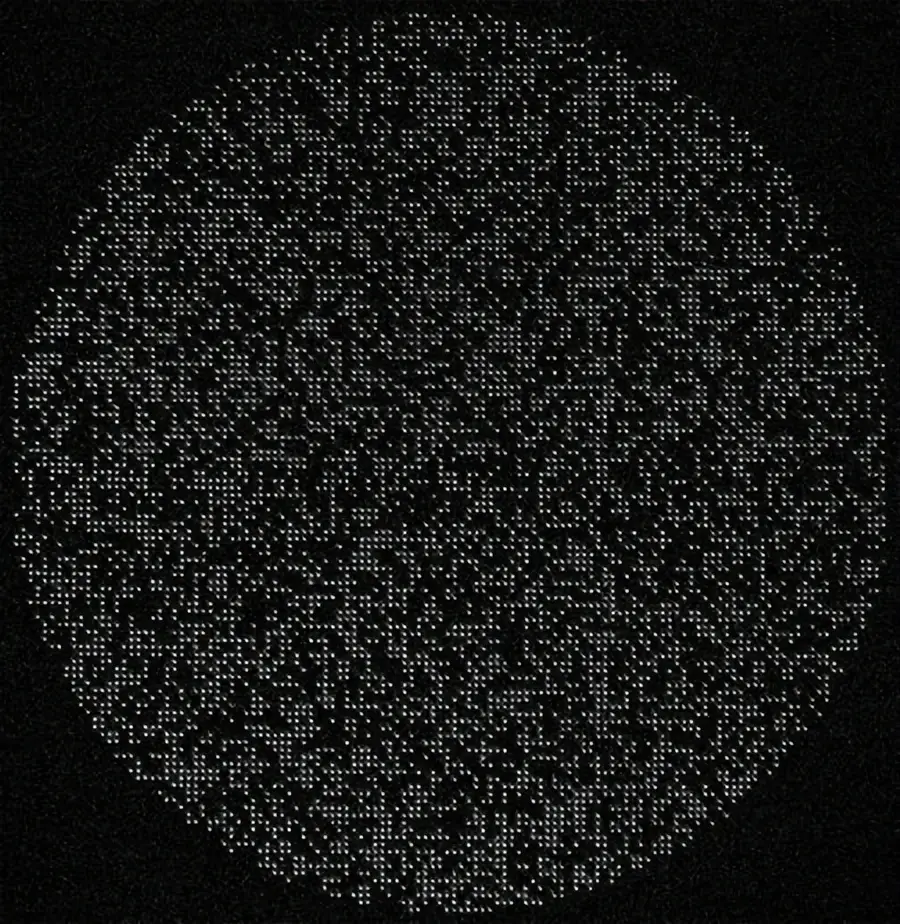
(https://www.caltech.edu/about/news/caltech-team-sets-)
This performance represents a significant improvement over previous arrays containing only a few hundred qubits. The researchers not only scaled their system from the hundreds of qubits typically used in previous experiments to over 6,100 qubits, but also maintained the stability and precision required for quantum computers.
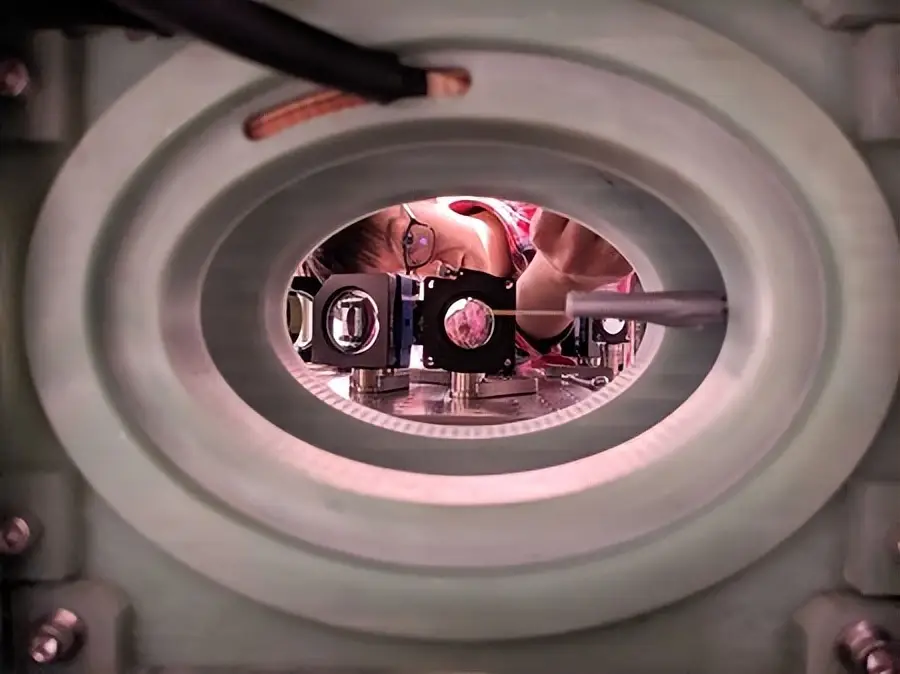
(Source: https://www.caltech.edu/about/news/caltech-team-sets-r)
A qubit is the fundamental unit of information in a quantum computer. While a classical bit can be either 0 or 1, a qubit can exist in a superposition of both states simultaneously, enabling the parallel execution of multiple complex calculations. However, the challenge lies in maintaining this state for long enough and stable enough to complete the calculations. This stability, known as coherence, is constantly threatened by noise, heat, or stray electromagnetic fields. However, the longer a qubit maintains coherence, the more advanced and reliable the operations a quantum computer can perform before errors occur. This is why truly powerful quantum computers require hundreds of thousands of qubits. However, for quantum computers, time is only one factor in quantum processes; what is needed is a coherence time that far exceeds the operation time. If the operation time is one microsecond and the coherence time is one second, this means that approximately one million operations can be performed.
Optical tweezers are highly focused beams of light. To achieve scaling without sacrificing fidelity, researchers use them to grasp and position individual atoms. By splitting a single laser beam into 12,000 tiny optical traps, 6,100 atoms can be stably contained within a vacuum chamber. Specifically, using the right laser wavelength allows the light to attract atoms, forming a trap. If the light is confined to a very small spot, on the order of micrometers, it can absorb and trap many atoms.
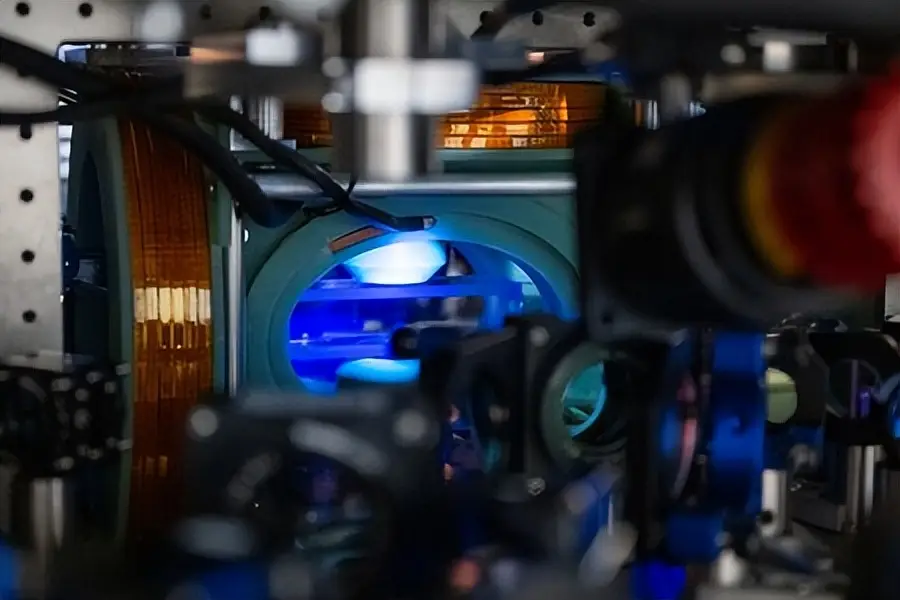
(Source: https://www.caltech.edu/about/news/caltech-team-sey)
In this achievement, researchers were able to move atoms within the array without disrupting their quantum state, known as superposition. This means they can move qubits while maintaining their stability, a benefit that will make quantum computers more error-correctable. Large-scale calculations, involving more atoms, typically come at the expense of accuracy, but this achievement strikes a balance between accuracy and performance. Previously, low-quality qubits were essentially useless; this study achieved a perfect balance between quantity and quality. While this achievement doesn't lead to a practical quantum computer, by combining accuracy, coherence, and scalability in a single system, it sets a new benchmark and strengthens the position of neutral atoms as a leading platform for quantum computing.
The research team also achieved this feat by moving atoms within the array by hundreds of microns while maintaining superposition. Qubit mobility is a key feature of neutral atom quantum computers, enabling more efficient error correction than other qubit architectures, such as superconducting qubits. Moving a single atom and keeping it in superposition is like trying to hold a cup of water while running, but the water doesn't churn. Trying to keep the atoms in superposition at the same time is like running carefully to avoid churning the water too much.
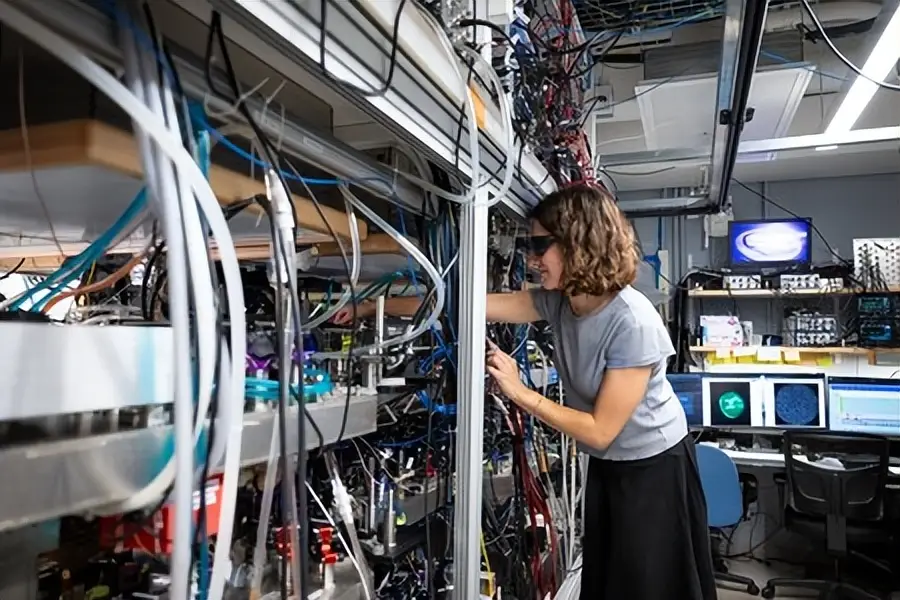
(Source: https://www.caltech.edu/about/news/caltech-team-s)
Neutral atom quantum systems are currently gaining increasing attention and have become a strong competitor to superconducting circuits and trapped ions. One of the unique advantages of neutral atom quantum systems is their physical reconfigurability, allowing atoms to be rearranged during computation by moving optical traps, providing dynamic connectivity that is difficult to achieve with rigid hardware topologies. To date, most neutral atom arrays have contained only a few hundred qubits, but this achievement, with 6,100 qubits, represents a significant step forward. Technology companies and quantum labs around the world are currently scrambling to scale up quantum computers. IBM has pledged to build a 100,000-qubit superconducting computer by 2033. Two other US quantum companies, IonQ and QuEra, are developing methods using trapped ions and neutral atoms. Quantinuum, another US quantum company, aims to build a fully fault-tolerant quantum computer by 2029.
Of course, the Caltech team has new goals to achieve. Conventional computers make an error once every 1017 operations, while current quantum computers are far from achieving this level of accuracy, and achieving this level of accuracy with hardware alone is impossible. Therefore, the Caltech team will need to demonstrate large-scale error correction in the future, which requires encoding logical qubits from thousands of physical qubits. Successful completion of this demonstration will pave the way for the application of quantum computers to chemistry and materials research.
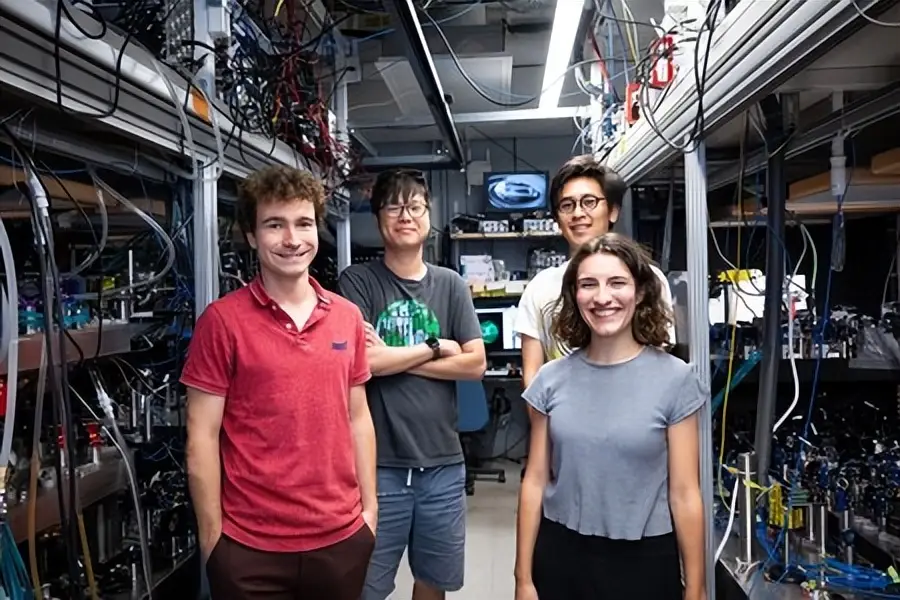
(Source: https://www.caltech.edu/about/news/caltech-team-sety)
Notably, this research has received support from multiple external organizations. Specifically, this project was funded by the Gordon and Betty Moore Foundation, the Weston Havens Foundation, the National Science Foundation, the Institute for Quantum Information and Matter at Caltech, the U.S. Army Research Office, the U.S. Department of Energy (including its Quantum Systems Accelerator), the Defense Advanced Research Projects Agency, the U.S. Air Force Office of Scientific Research, the Heising-Simons Foundation, and the Amazon AWS Quantum Postdoctoral Fellowship Program.
Caltech Professor Manuel Endres is a co-corresponding author of the paper. He and his team focus on experimental and theoretical quantum science. Their research areas include experiments with independently controlled neutral atoms, exploring new methods for quantum simulation/quantum information and quantum-enhanced metrology, and studying quantum many-body physics theory and machine learning applications.
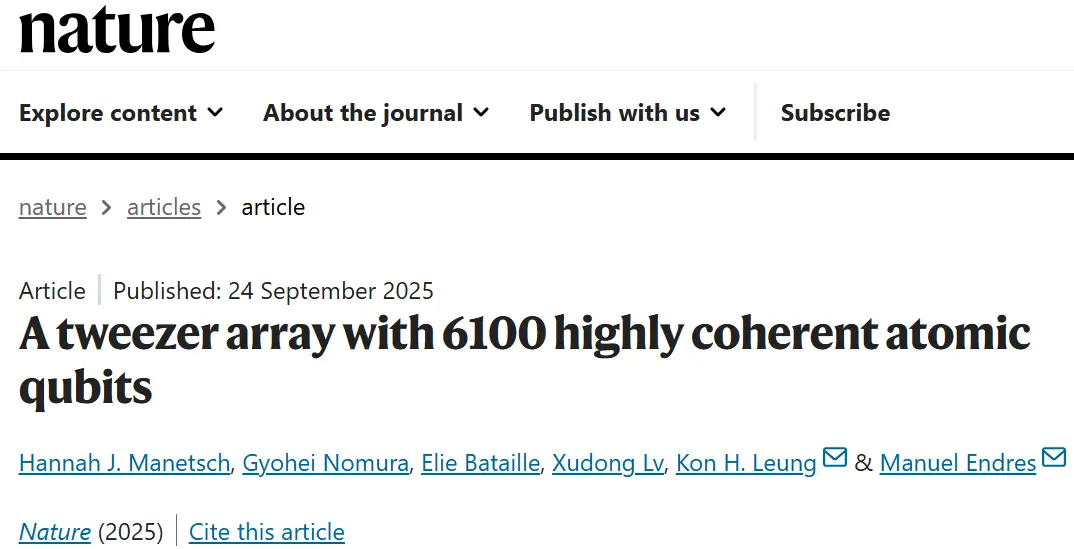
Image | This Nature paper (Source: https://www.nature.com)
According to data, this is not the first time the team has published a quantum-related paper in a top journal like Nature. In the past two years, the team has published at least three papers in Nature and Science, respectively. In May 2025, the team achieved electron cooling, control, and motion super-entanglement in optical tweezers, with a paper published in Science. In that research, they used a species-independent cooling mechanism to prepare the atomic ground state of motion, allowing the mechanism to forward motion excitations into positionally known erasure errors. This cooling mechanism is reportedly fundamentally superior to idealized traditional sideband cooling mechanisms. By coherently manipulating the resulting pure motion state, the team achieved local shelving to enter a motion superposition state, enabling in-circuit readout and in-circuit erasure detection. Furthermore, they entangled the motion of two atoms in separate optical tweezers and generated super-entanglement by simultaneously preparing Bell states of motion and optical qubits, thereby unlocking a quantum operation using neutral atoms.
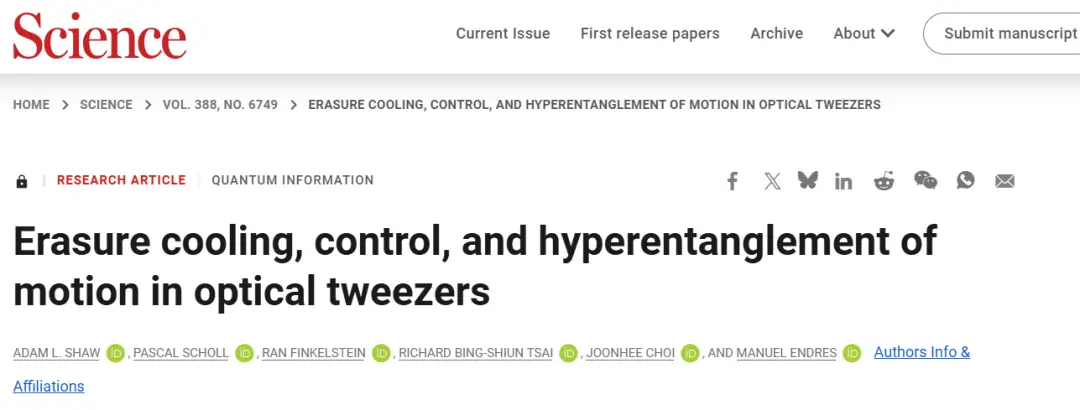
(Source: https://www.science.org/doi/10.1126/science.adn2618?)
In October 2024, the team published a Nature paper demonstrating universal quantum operations and readout of ultranarrow optical transitions using assisted neutral atoms. They also demonstrated circuit-based quantum metrology using a neutral-atom optical clock in an optical tweezers clock platform. Based on this, they achieved a two-qubit entangled gate with 99.62% fidelity through Rydberg interactions and dynamic connectivity between the optical clock qubits. Combining this with local addressing, they realized a universal programmable quantum circuit. Using this approach, the team generated near-optimal entangled detection states.
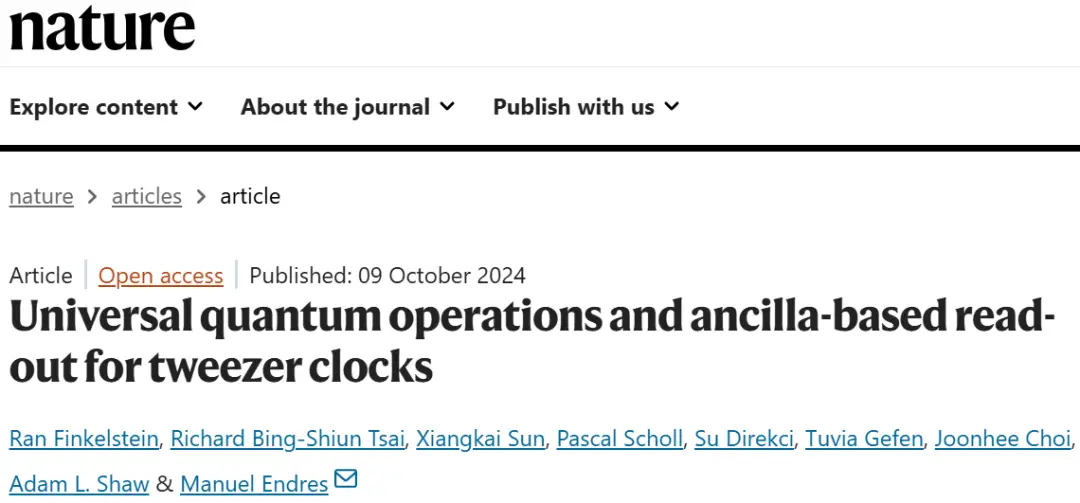
(Source: https://www.nature.com/articles/s41586-024-08005-8)
As mentioned earlier, one of the co-authors of the Nature paper mentioned above is Lü Xudong, currently a researcher at the Shanghai Institute of Optics and Fine Mechanics, Chinese Academy of Sciences. According to Lv Xudong, he received his undergraduate degree from Peking University and his doctorate from the University of California, Berkeley. After completing his doctorate, he conducted postdoctoral research at UC Berkeley and then at the California Institute of Technology. From the fall of 2024 to the spring of 2025, Lv Xudong served as a researcher at the California Institute of Technology. He then returned to China to join the Shanghai Institute of Optics and Fine Mechanics of the Chinese Academy of Sciences. His current research focuses on neutral atom quantum computing and quantum simulation, which aligns closely with his postdoctoral research in the United States. This research may help him achieve further breakthroughs at his new institution.




